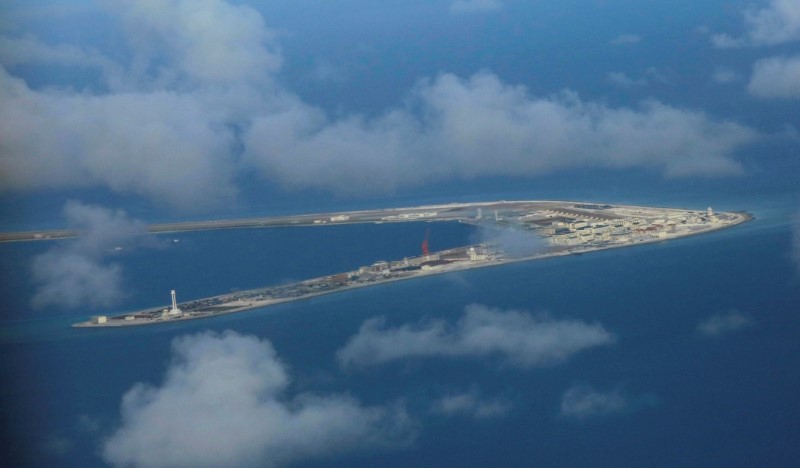Last week, U.S. aerospace giant Boeing (NYSE: BA) released another stellar quarterly earnings report. Core earnings per share (EPS) soared to $3.64 from $2.17 a year earlier, beating the average analyst estimate by more than $1. The company also bumped up its forecast for full-year EPS and operating cash flow.
Following the earnings report, Boeing executives talked about the actions they are taking to keep earnings moving higher. They also delved into some of the risk factors that could potentially derail Boeing’s momentum — and how they are mitigating those risks.
Continue Reading Below
Cautiously optimistic about avoiding a trade war
One of the biggest risks Boeing faces right now is an uptick in protectionism. The company has a global supply chain, so tariffs on imported raw materials or components would drive up its production costs. Meanwhile, the vast majority of Boeing’s commercial airplane production is exported, making it vulnerable if other countries impose tariffs on its products.
Indeed, China caused a scare last month when it proposed a tariff on U.S. aircraft in retaliation for proposed U.S. tariffs on Chinese imports. However, the tariff was actually designed to avoid impacting Boeing very much, as China has a voracious appetite for new aircraft.
Boeing executives emphasized that they are in constant contact with governments, suppliers, and customers across the world. For the moment, they remain optimistic that the U.S. won’t be sucked into a damaging trade war with China or other major trading partners.
787-8 production is becoming more efficient
Advertisement
Last month, Boeing won a huge order for 787 Dreamliners from American Airlines. Somewhat surprisingly, 22 of the 47 aircraft ordered were the smaller 787-8 variant, which Boeing’s sales team has de-emphasized in recent years in favor of the more profitable 787-9 and 787-10 models.
Boeing’s ability to sell the smallest Dreamliner variant at a profit has improved recently due to a modest redesign of the aft section that will increase commonality between the 787-8 and 787-9, reducing production costs. Nevertheless, Boeing CEO Dennis Muilenberg stated that he still expects the production mix to continue shifting toward the 787-9 and 787-10.
Don’t expect a middle-of-the-market launch soon
For the past year or so, investors have eagerly awaited a decision from Boeing on whether it will proceed with development of a “middle-of-the-market” airplane to bridge the gap between the 737 and 787 families. Such a model could open up lots of new opportunities in the transatlantic market — and perhaps also on regional routes in Asia.
Muilenberg hinted last week that Boeing is in no rush to make a decision. On multiple occasions during the earnings call, he said that the company has “time to do our homework” to make sure there is a solid business case. This pretty much rules out the possibility of beginning sales during the Farnborough Airshow in the United Kingdom in July. In fact, Boeing could still be about a year from making a final decision. That means that deliveries wouldn’t begin until at least 2025.
Moving closer to the initial batch of tanker deliveries
Boeing’s cash flow has increased tremendously since 2016. Nevertheless, the company expects to continue growing cash flow each year through the end of the decade.
One key milestone that will contribute to reaching this target is the beginning of KC-46 Pegasus tanker deliveries to the U.S. Air Force. Boeing has been burning cash on the KC-46 program for years due to cost overruns and the cost of building test models. However, the company remains on track to deliver the first 18 tankers by the end of 2018. This will bring in a big influx of cash, helping Boeing to meet its cash flow target for the year.
Not counting on Iran Air deal for the 777
In late 2016, following the Obama administration’s decision to loosen sanctions on Iran, Boeing struck an agreement to sell 80 aircraft to Iran Air. This deal included 15 777-300ERs, helping to fill a looming production gap for Boeing’s current-generation 777 family.
Unfortunately, the U.S. government has never given final approval for these aircraft purchases. With the Trump administration recently taking a hawkish tone on Iran, it doesn’t seem likely that this approval will come anytime soon.
The good news is that Boeing isn’t counting on this order being firmed up. Management believes that the company will hit its 777 production targets in 2018 and 2019 without any deliveries to Iran Air. It received five firm orders for 777s in the first quarter, and recently signed a letter of intent with Qatar Airways for five 777 freighters, which will help in this respect.
10 stocks we like better than BoeingWhen investing geniuses David and Tom Gardner have a stock tip, it can pay to listen. After all, the newsletter they have run for over a decade, Motley Fool Stock Advisor, has quadrupled the market.*
David and Tom just revealed what they believe are the 10 best stocks for investors to buy right now… and Boeing wasn’t one of them! That’s right — they think these 10 stocks are even better buys.
Click here to learn about these picks!
*Stock Advisor returns as of April 2, 2018
Adam Levine-Weinberg has no position in any of the stocks mentioned. The Motley Fool has no position in any of the stocks mentioned. The Motley Fool has a disclosure policy.

